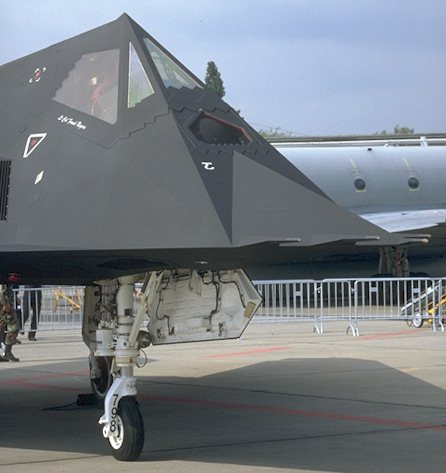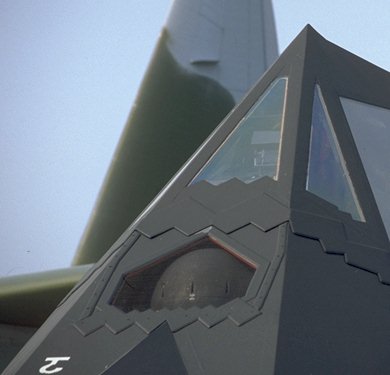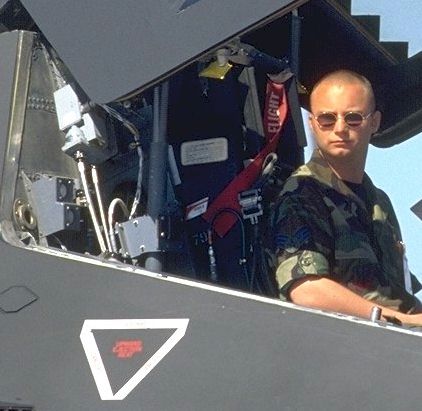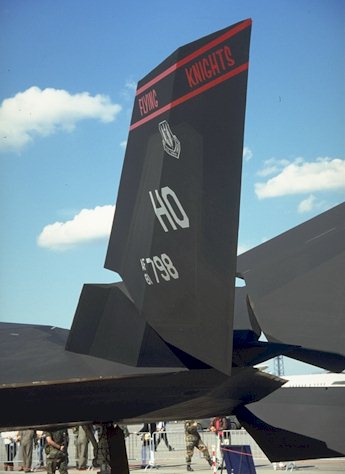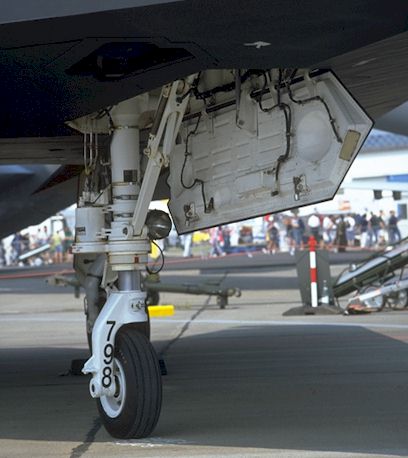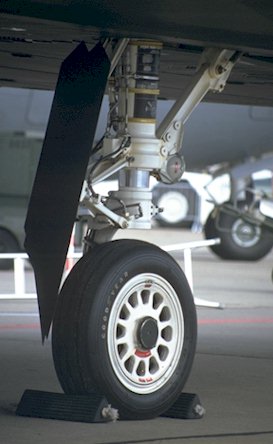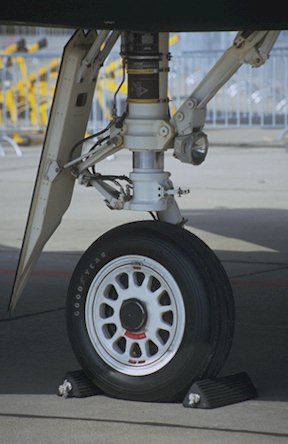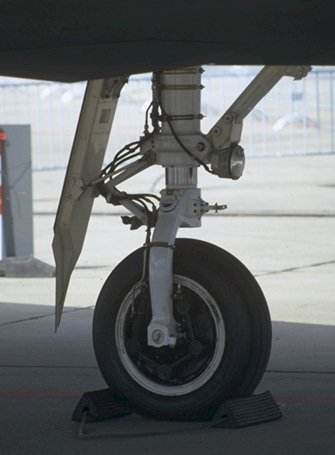by Burkhard Domke, www.b-domke.de
text by Martin Waligorski
photos by Burkhard Domke
Lockheed’s Magnum Opus
In relatively few years after its public appearance in the Gulf War, the F-117 has arguably become the best-known shape in the skies besides great oldtimers like the Concorde and the Jumbo Jet. Almost twenty years after its first flight, the aircraft still looks like a product of an era yet to come.
Its conception was preceded by years of studies performed with utmost secrecy since mid-1970s. The research program Have Blue culminated in two proof-of-concept aircraft porduced and flown by Lockheed. When actual full-scale fighter was designed, Lockheed made extensive use of components and equimpent from in-service aircraft, not only to reduce costs, but to maintain secrecy so that many F-117 costs could be recorded as ”spares”. As a result, the F-117 has a nose gear from A-10A, main wheels from F-15E, cockpit displays from F/A-18 Hornet, avionics from F-16 and so on.
In operational use, the F-117 is a tactical fighter intended for precision attacks against high-value targets. The first operational unit was released for flying the F-117 in 1983, but for six following years it only undertook night flights at Tonopah Test Range to maintain strict secrecy. It was not until 1988 that the existence of the type was officially acknowledged by Pentagon, but even then with only a single – and faked – photo being released to the press.
The aircraft was put into action for the first time during invasion in Panama in December 1989. But it was three years later, during operation Desert Storm, that the F-117 gained publicity and fame widely exceeding its numerical share of the Allied air forces. In a high-technology conflict the F-117 became an undisputed star. Today, as its existence and true shape is no longer classified, it is a valued guest of many airshows throughout the world. The pictures presented here have been taken in June 2000 at ILA in Berlin, Germany.
Lockheed F-117A in Detail
Every big and small detail of the amazing F-117 airframe is seemingly governed by but one principle – reducing the aircraft’s detectability. Everything about it is angular to reduce radar signature, including the wing section seen here – built from three flat surfaces on the top side an6d two on the underside.
Although the resulting shape may not be desrcibed as graceful, there is a strange and powerful magic in all its purposefullness.
This particular aircraft, serial no. 81-10798, serves with 9th Fighter Squadron of the 49th Tactical Fighter Wing, a Gulf War unit (at that time the wing was designated 37th FW)
The nose in particular looks like a space pyramid. It’s extreme tip houses the rear-facing floodlight which can illuminate the refuelling port at the fuselage spine for night aerial refuelling operations.
As can be seen, the five cockpit windows are entirely flat, surrounded by heavy framing. An interesting break from all-round vision pliexiglass domes of most modern combat aircraft.
Irregular dogtooth patterns are used along cockpit rim and other operning doors and panels to disrupt the possible radar reflection from these elements.
Below the cockpit there is a port for FLIR (Forward-Looking Infrared sensor), covered with fine wire mesh.
A view from another angle reveals what’s inside the FLIR port. The rotating dome houses the infrared detector used to acquire targets at night from long range. Augmenting the FLIR is the downward-looking infrared sensor located in the similar port beside the front undercarriage bay. The DLIR stays peering at the target during the attack phase. There is also a laser designator for precision guidance of laser-guided missiles.
Note the red outline of the port recess.
Although not seen in this photo, the cockpit transparencies are covered with ultra-thin film of gold. In favourable lightning conditions it would show in a form of distinct gold tint to the windows.
The name on the cockpit rim reads Lt Col Frank Rogers
Close-up of the forward cockpit area showing details of the HUD (head-up display) and forward cockpit decking.
Another close-up shows details of the ACES ejection seat.
The Nighthawk uses a quadruplex fly-by-wire avionics system which picks flight data from these four probes in the extreme nose of the aircraft.
The use of fine mesh over engine intakes makes them reflect radar waves in the same way as a flat surface would.
Note small yellow elements visible in the inner row of the mesh, the purpose of which could not be determined.
This is a very interesting photo of the port intake area because gives some idea about the factory treatment of panel lines of the F-117 airframe. They have all been covered to create a solid surface with stripes of material resembling… some kind of tape.
A glimpse under the wing reveals two hexagonal access panels and a more conventional-looking navigation light. The angular fairing to the rear is the forward cover of the main wheel, here in closed position.
The v-tail consists of two swept all-moving surfaces of complex cross-section. The control surfaces have multiple role of elevators, rudders, and auxiliary ailerons all in one unit. A term ruddervons was used in the press to describe their function.
More detail of the v-tail with topside of the aircraft visible in the background.
Again, the entire upper surface is solid without uncovered panel lines, curiously with an exception of two brake-chute compartment doors just in front of the tail (the authors wouldn’t be surprised if they get taped shut prior to any ’hot’ mission). The ”beacon” at the far end of the photo is the previously mentioned floodlight on top of the cockpit frame.
View of the wing elevon arrangement with engine exhaust nozzle to the left. The exhausts are formed into narrow slits to help cool down the efflux gases thus reducing the infrared signature of the aircraft.
A noteworthy detail is small stencil showing the shape of the aircraft in plan view. It’s purpose could not be determined.
Single front undercarriage unit betrays its decendancy from A-10 Thunderbolt. Note last digits of the serial number repeated in the wheel fork.
Barely visible opening on the fuselage underside is the DLIR port (downward-looking infrared).
A detailed view of front wheel cover’s inner side.
Two good views of starboard main undercarriage leg and wheel.
Finally, concluding this walkaround, the port main undercarriage viewed from the fuselage centerline outwards.
This article was originally published in IPMS Stockholm Magazine in September 2001.

